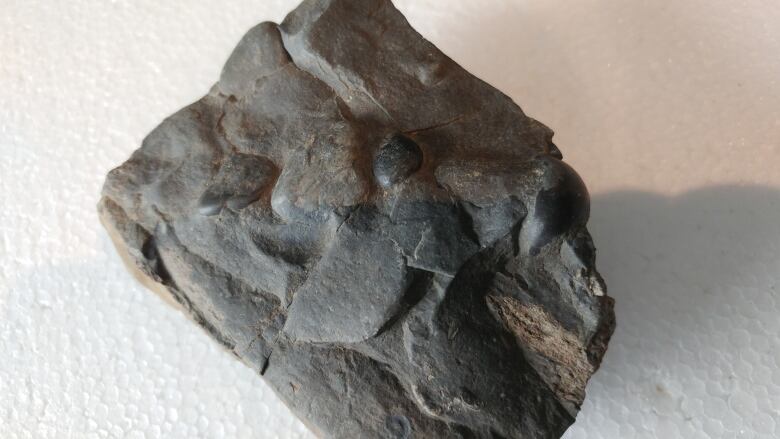80-million-year-old elasmosaur fossils discovered on Vancouver Island
The first finger bone was discovered on a fossil tour, several more appeared recently

Pat Trask was leading one of his fossil tours down by a river on Vancouver Island when one of the visitors picked up something unusual: a finger bone from an elasmosaur, a sea reptile from the dinosaur age.
A few months later, another tour participant picked up a small bone that looked like a hockey puck. That one turned out to be from the wrist of the elasmosaur.
"I started to realize that, actually, these things are falling out of the cliff," said Trask, curator of natural history at the Courtenay and District Museum and Palaeontology Centre.
The bones in question were appearing near the Trent River, a few kilometres from Courtenay, B.C. They were — and still are — falling from a nearby 15-metre overhanging cliff.
"This thing is coming out fairly quickly," Trask told CBC's All Points West.

Trask recently discovered a handful of new fossils, including a humerus bone and stomach stones. Some of the items appeared overnight, he said.
'A beautiful animal'
Elasmosaurs were dinosaur-like marine reptiles that lived about 80 million years ago.
"They're a beautiful animal," Trask said.
"They have a turtle-shaped body, a super long neck, a head full of pointy teeth for catching fish, flippers and a short tail."
Elasmosaur fossils have been discovered in places like Texas, Kansas, Alberta and B.C. — particularly Vancouver Island.

Last October, the B.C. government ran a contest to see what ancient creature should be the official provincial fossil and the elasmosaur won hands down. It hasn't officially been proclaimed yet, though.
"People don't quite realize that we have a very large fossil bed here, it extends pretty well from the Campbell River all the way south on the island to Duncan," Trask said.
Most of the specimens are found in bits and pieces. Trask's brother discovered the first elasmosaur fossil found west of the Rockies in 1988. It was about 80 per cent complete.
The elasmosaur fossil bones recently found in Courtenay make up about 10 per cent of the complete animal.
But Trask says he's not in a hurry to dig up any new bones — it's too dangerous because of where they are located on the steep, rocky cliff.
Instead, he said he's waiting for more to fall from the cliff.
"It's been in there for 80 million years so what's another week or two?"
Trask said he plans to put the bones on display at the museum.
With files from All Points West